Donations Make us online
Founded in 2017, KYDRA is an innovative Singapore-based brand that has revolutionised the way we think about activewear.
What began as a school project for a business competition has transformed into a successful crowdfunding campaign and ultimately, a thriving business venture.
Co-founded by Jimmy Poh, Wong Dingyao (Ding) and Matthew Chen, KYDRA aims to provide functional and stylish activewear.
KYDRA first came about when the co-founders were still studying in the UK. Jimmy first met Ding, who studied finance and investment banking, as housemates during their university years. Their shared passion for fitness turned them into gym buddies, and their workout sessions fuelled their aspirations to create something unique together.
Meanwhile, Matthew was Jimmy’s former teammate in Temasek Polytechnic’s tennis team. The photography enthusiast naturally pursued a degree in photojournalism, and he later helped out the duo as their “creative eye”.
While Matthew officially joined the company at a later stage, he is considered an integral part of the founding team. Although the 31-year-old trio had diverse backgrounds, their shared interests laid the foundation for their entrepreneurial venture.
They raised US$10K on Indiegogo
The inspiration behind KYDRA stemmed from Jimmy and Ding’s personal frustration with the inadequacies of available sports shorts then in terms of accommodating larger phones and the need for card storage during gym sessions.
This gap in the market sparked their entrepreneurial spirit, leading them to conceptualise and develop a revolutionary line of sports shorts that addressed these pain points.
“KYDRA started out as a business competition called Idea Fest during university back in 2016,” Jimmy told Vulcan Post over a phone interview.
Through the competition, they saw an opportunity to showcase their product and generate real sales. They believed that a successful crowdfunding campaign would bolster their chances of winning the competition, as it demonstrated the product’s viability and demand.
We raised US$10,000 on Indiegogo. The point of it was to [serve as] a proof-of-concept to help us win the competition. We figured that if we could make money like a profitable business on paper, then technically it’s a no-brainer that our business can make money at the end of the day. With what little marketing we did, we were actually able to achieve our target.
– Jimmy Poh, co-founder of KYDRA
The campaign’s success not only boosted their confidence, especially since their university lecturer often emphasised the importance of creating a profitable business from the outset.
The duo eventually came in third place in the competition, winning a cash prize of £250. In addition to the monetary reward, they were also offered mentorship opportunities within the school, aimed at providing guidance and support for them to kickstart their entrepreneurial journey.
“After the competition, we started getting feedback that our shorts changed the game and became the favourite pair in their wardrobes. This gave us the confidence to try out KYDRA as an actual business.”
Understanding consumer pain points to create the perfect products
KYDRA’s research and development process is deeply rooted in identifying customer needs and preferences. It typically starts with a problem faced by someone within the company, which serves as a catalyst for brainstorming sessions.
The team then designs the product, selects appropriate fabrics, and creates a sample. Field testing and collecting feedback are integral parts of the process, enabling the team to refine the product iteratively until they achieve the desired functionality and versatility.
Similarly, this applies to their first product, the two-in-one Flex Shorts.
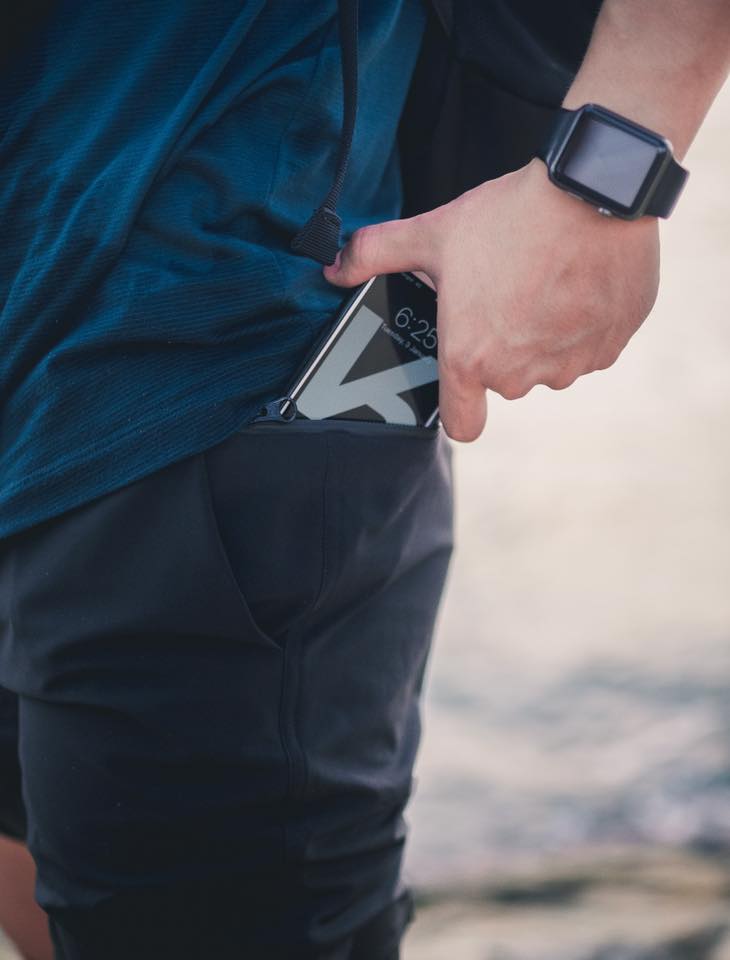
[These] shorts came from our own inconveniences when going to the gym, playing tennis, and attending university classes. We wanted a pair of shorts that look clean and structured, and perform just as well as any sports shorts in the market. We also wanted utility [features] without it looking like a pair of cargo shorts.– Jimmy Poh, co-founder of KYDRA
As such, the shorts was designed with the “perfect sports shorts” in mind. It features inner tights that are very stretchy, hidden pockets, as well as an invisible zip for a cleaner finish.
However, in the early days of establishing the company, the co-founders faced challenges due to their limited background in fashion. Expressing their designs and finding the right materials proved to be a significant hurdle.
“It took us a really long time to produce our first product, especially when what we wanted in terms of fabric and make was not common in the marketplace,” lamented Jimmy.
KYDRA ended up sourcing material from various locations such as Taiwan and Australia, seeking fabrics that were cutting-edge.
“At that period of time, they drew the line very clearly between casual wear and sportswear. They didn’t have anything that merged both, which was what we were looking for, so we went to a lot of trade shows in London, China, and even Singapore,” shared Jimmy.
“We couldn’t find that kind of material, but we found one Australian company that actually made something similar to what we were looking for. A Taiwanese company could also custom-make that kind of material, so we had to customise the materials at the beginning.”
From the conceptualisation stage in late 2015 to the final product’s release in mid-2016, KYDRA invested approximately six to eight months in the development of the shorts.
The co-founders worked closely with Singapore-based manufacturers, creating multiple samples to refine the design and address any issues. This involved sending the prototypes to the UK for testing, resulting in longer lead times due to back-and-forth deliveries.
“This was extremely tiring because we couldn’t really articulate what was wrong with the product. We knew exactly what the shorts should be in our head — it’s very clear — but articulating it was very difficult. We could [only afford] to wear it and tell them what we don’t like it, but we couldn’t write down in specific technical terms as to why we don’t like it,” said Jimmy.
Catering to the female demographic
KYDRA initially focused on the men’s sportswear market, but Jimmy said that their expansion into the women’s athleisure market was a natural progression, driven by the requests of their female friends and partners.
“We then began to look into daily pain points in the market and started to design from there,” said Jimmy.
One significant pain point observed by Ding was the flipping of the band on his wife’s sports bras during washing. To solve this issue, KYDRA simply sewed the band down, eliminating the hassle of unfolding it every time.
This simple yet effective solution proved to be a game-changer. Additionally, bra inserts often flipped and peeled in the wash, causing further inconvenience. KYDRA addressed this by making their inserts removable, ensuring they remained firm and durable even after multiple washes.
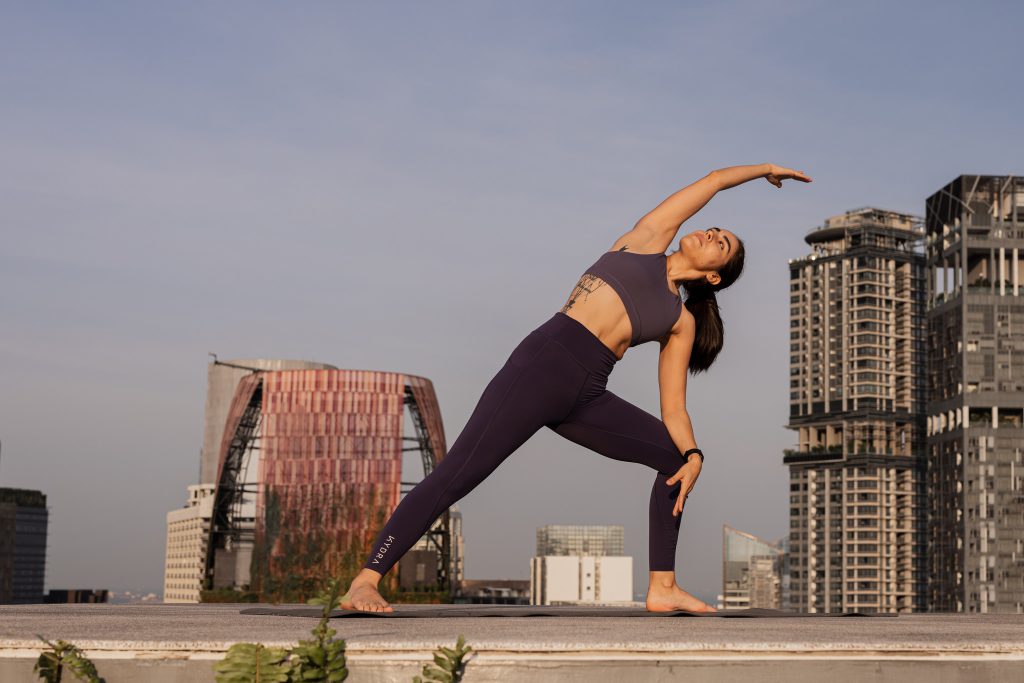
Besides sports bras, another area of focus for KYDRA was leggings. Jimmy noted that traditional leggings tend to feel excessively warm, making them uncomfortable to wear in Singapore.
Most leggings are were made for countries with cooler climates, like the US, Canada and China, where it does get cold, so it makes sense for the leggings to be thick. Hence, we needed to find a material that is cooling to the touch and extremely breathable, made for tropical climates.
– Jimmy Poh, co-founder of KYDRA
By developing a “tropical version of leggings”, KYDRA catered to the needs of women in such climates, offering a lightweight and comfortable alternative.
The attention to detail extended to shorts as well, where KYDRA incorporated bigger and spacious pockets, catering to women’s need for practicality. By addressing these small pain points, KYDRA aims to enhance the overall experience of wearing activewear and make everyday activities more convenient.
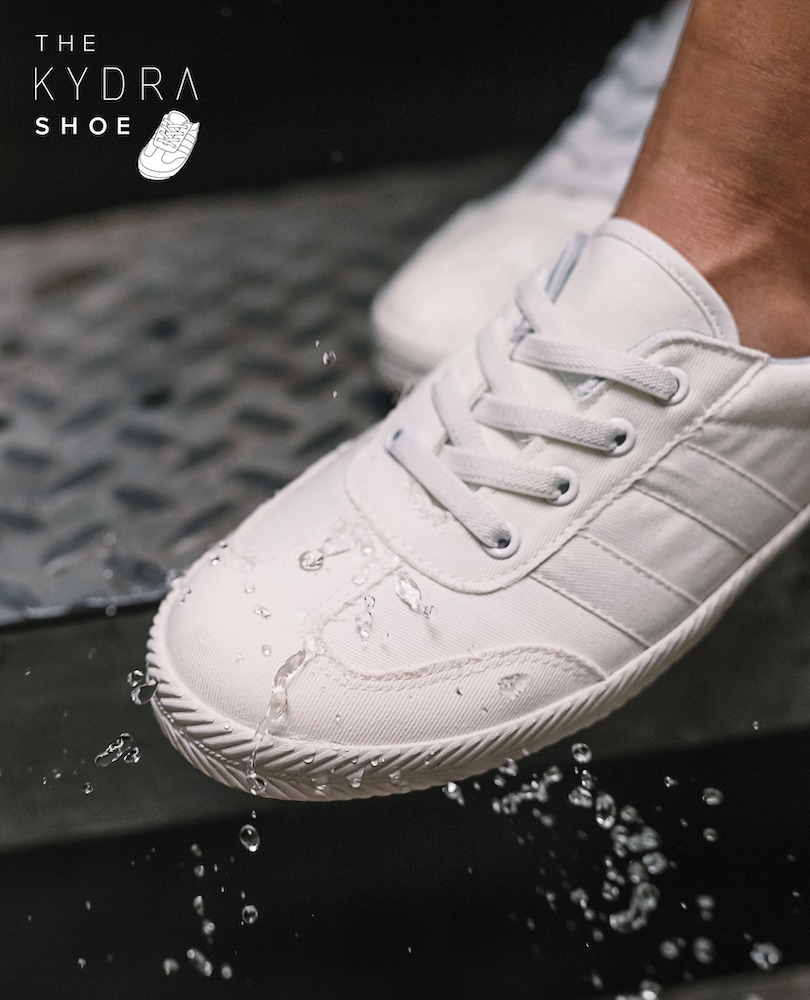
According to Jimmy, KYDRA’s best-selling products are currently their sports bras, leggings, and shoes. He added that the KYDRA shoes were an interesting addition to their product line, designed to complement their leggings.
These slip-on shoes, featuring antibacterial and water-resistant properties, offer both style and functionality. They elevate the overall appearance, providing an elegant look to individuals attending yoga classes or wearing leggings in general.
Thriving amidst the pandemic
Building a successful business is no small feat, and KYDRA is well-aware of the challenges that come with entrepreneurship.
One of the key challenges they encountered was the lack of working experience and guidance. Manpower management and task prioritisation posed ongoing difficulties, which only grew more complex with each passing year.
However, Jimmy emphasises that recognising their weaknesses and mistakes has been instrumental in their growth. By constantly seeking improvement, KYDRA has been able to navigate through these challenges and refine their business operations.
Although the emergence of the COVID-19 pandemic undoubtedly impacted businesses worldwide, KYDRA experienced an unexpected boost during this time. Jimmy said that the increased focus on health and the suspension of travel have led more people to invest in fitness-related products, including activewear.
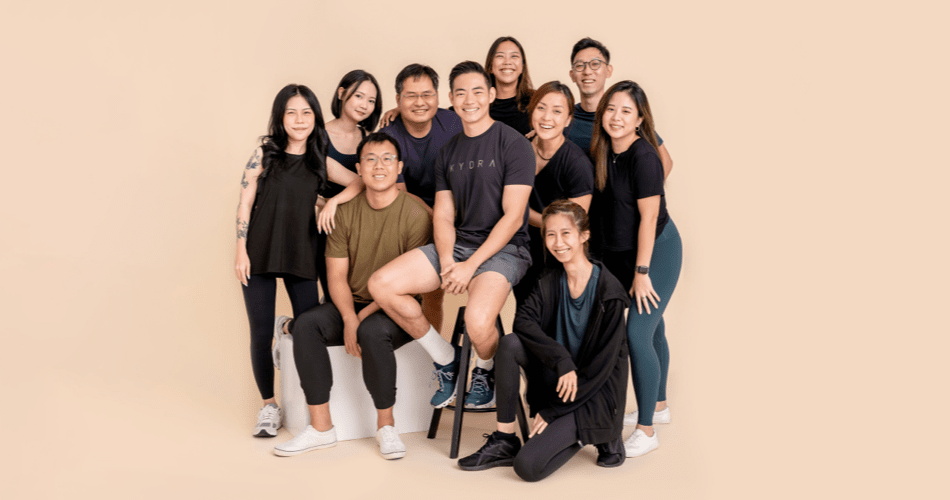
Consequently, KYDRA saw a significant surge in their business, with a 60 per cent growth in 2020. That same year, KYDRA also crossed its million-dollar revenue mark, indicating their strong growth trajectory.
We’re still in the millions for sure, and have been growing over 50 per cent year-on-year.
– Jimmy Poh, co-founder of KYDRA
Despite the positive outcomes, the pandemic did present logistical challenges for KYDRA, particularly the increase in shipping freight costs.
Dealing with closures and shipping fabric from outside of China into the country further complicated matters. Nevertheless, KYDRA’s resilience and adaptability allowed them to navigate through these obstacles and continue their upward trajectory.
KYDRA’s success story is even more remarkable considering that they have been entirely bootstrapped, without any external investors. The initial funding to kickstart the business was less than S$10,000, a testament to their resourcefulness and ability to maximise their limited resources.
Overseas expansion is in the works
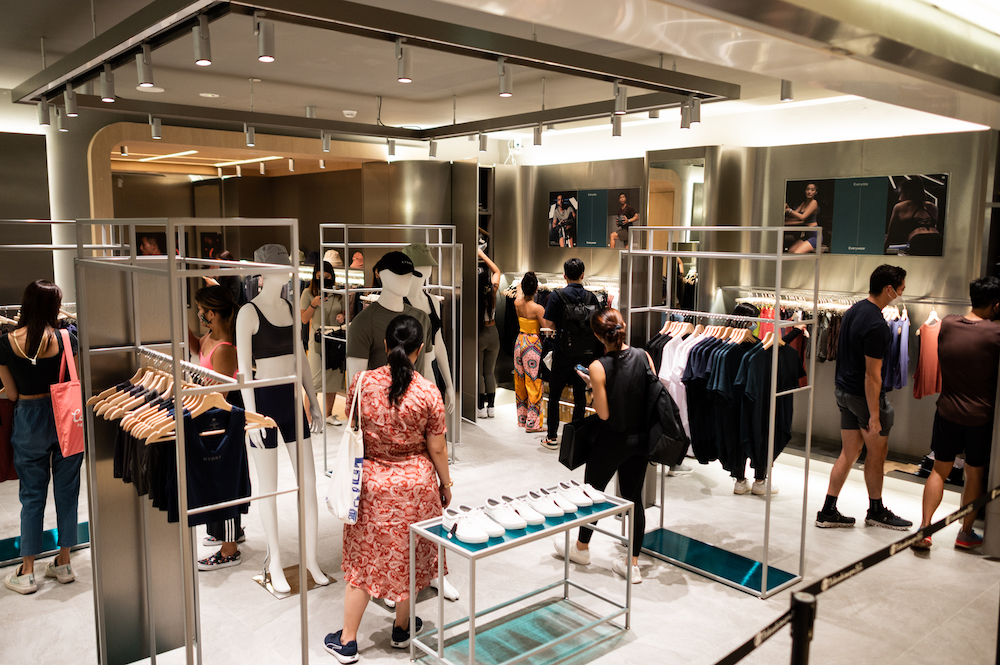
After five years as a digital-only brand, KYDRA made a significant move by opening its first physical store at Takashimaya last year.
We always felt that KYDRA is a tangible business — we spend a lot of time with our fabric and materials, and being exclusively online did not do it justice. We also believe that clothing needs to be tried on to best understand the fitting.
– Jimmy Poh, co-founder of KYDRA
Furthermore, the allure of Orchard Road and its prestigious reputation played a role in their decision. Jimmy believes that choosing a location with existing footfall and credibility in Singapore’s shopping district provides KYDRA with a foothold before they expand further in Singapore and eventually overseas.
Looking towards the future, KYDRA has ambitious plans to “evolve the next phase of activewear”. Elaborating on this, Jimmy explains that they are currently developing a new range of products that align with emerging trends and changing perceptions of fitness.
KYDRA aims to cater to the evolving needs of their female customers, who are transitioning from yoga, to various forms of cardio-intensive exercises like spin-cycling, to CrossFit activities. This shift in the market demands activewear that is edgier, bolder, and stronger.
As such, KYDRA’s upcoming products will offer a unique blend of high-impact functionality with a lounge-like feel, while addressing pain points revolving these activities.
The ultimate goal for KYDRA remains consistent — to become Southeast Asia’s leading activewear brand. However, their ambitions extend beyond the region.
It is actively planning its expansion into overseas markets, eyeing Southeast Asian regions for their next strategic move. While the specific markets are still under consideration, KYDRA aims to take a deliberate approach, expanding one market at a time.
The brand envisions venturing into new territories by the end of this year or early next year, as they work their way towards becoming a global player in the activewear market.
Featured Image Credit: KYDRA
Source link







Leave a Reply